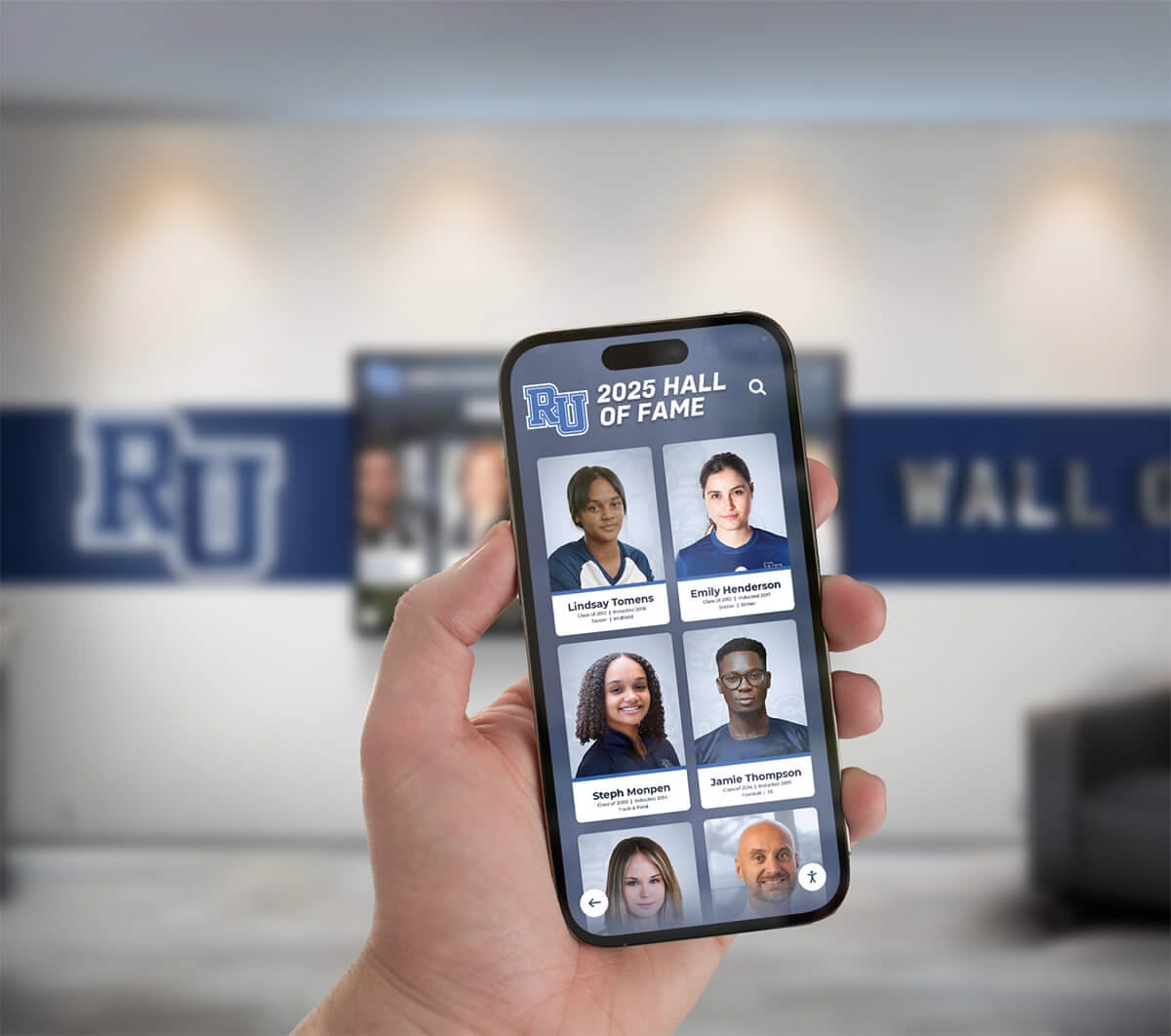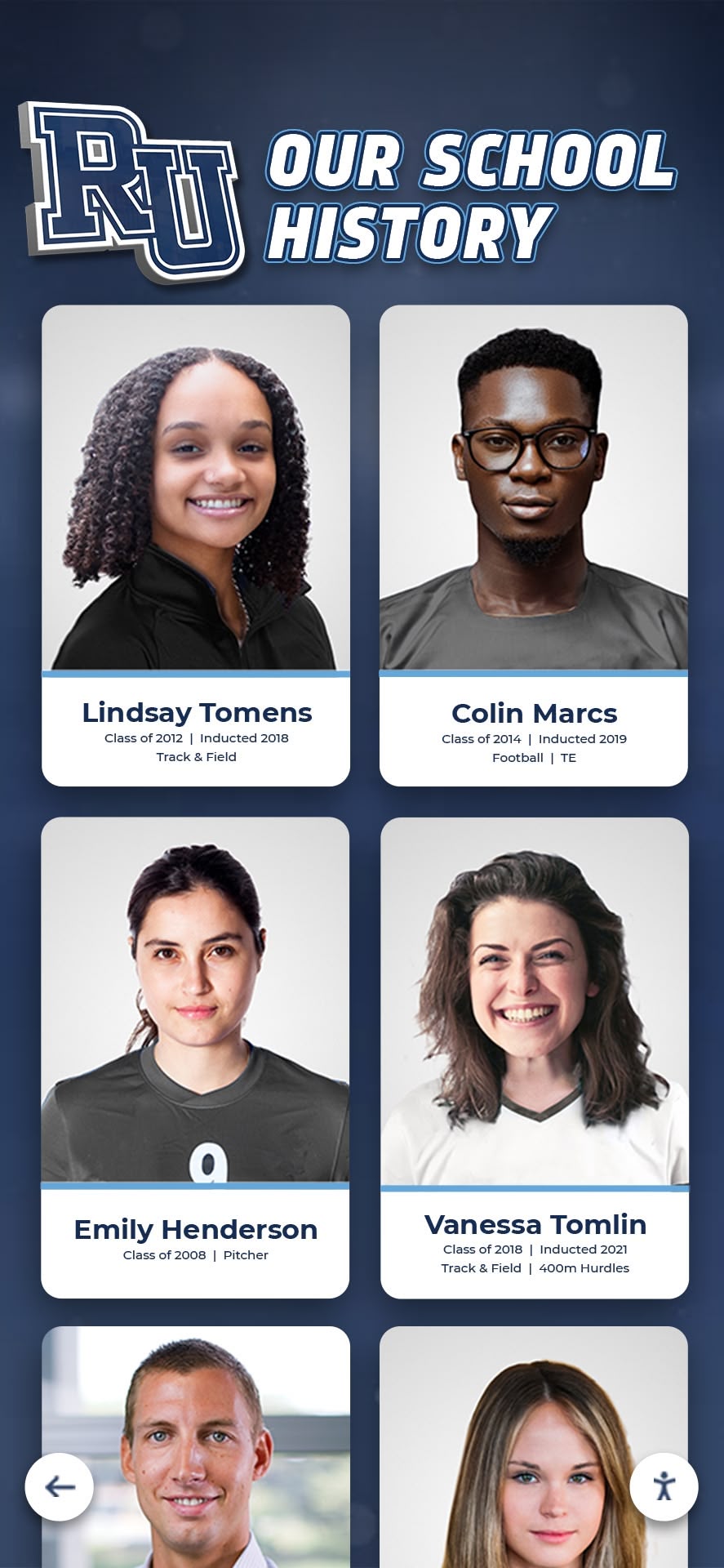Key Takeaways
Discover how schools preserve old magazines, yearbooks, and publications through digital displays. Learn best practices for archiving school history and engaging alumni.
Understanding the Value of Historical School Publications
School magazines and publications serve as vital historical documents capturing the authentic voice of student communities across decades. Unlike official institutional records, student publications reveal genuine perspectives, cultural trends, creative expression, and daily experiences that shaped school life during specific eras.
Why Old School Magazines Matter
Historical school publications provide unique value that makes preservation efforts worthwhile:
Authentic Historical Documentation: Student-produced content offers unfiltered glimpses into past eras, showing what mattered to students during specific time periods. Fashion, language, concerns, and aspirations visible in old publications reveal cultural contexts that formal records rarely capture. Researchers, historians, and sociologists increasingly recognize student publications as valuable primary sources documenting social history beyond what official archives preserve.
Alumni Connection and Nostalgia: Graduates maintain powerful emotional connections to publications they contributed to or appeared in during their school years. Reading old yearbooks, literary magazines, or newspapers triggers memories of friendships, achievements, and formative experiences. These nostalgic connections create natural engagement opportunities that strengthen alumni relationships and support fundraising initiatives.
Institutional Identity and Tradition: Long-running school publications demonstrate sustained commitment to student voice, creative expression, and community documentation. Schools with century-old literary magazines or decades of yearbooks possess tangible evidence of enduring institutional values. This continuity builds pride among current students who see themselves as part of continuing traditions.
Educational Resources: Historical publications provide rich materials for teaching history, media studies, creative writing, and cultural analysis. Students comparing contemporary publications with historical examples gain perspectives on how communication, values, and student concerns evolved over time. Archives of student work inspire current writers, artists, and journalists while demonstrating that student creativity matters beyond immediate publication.
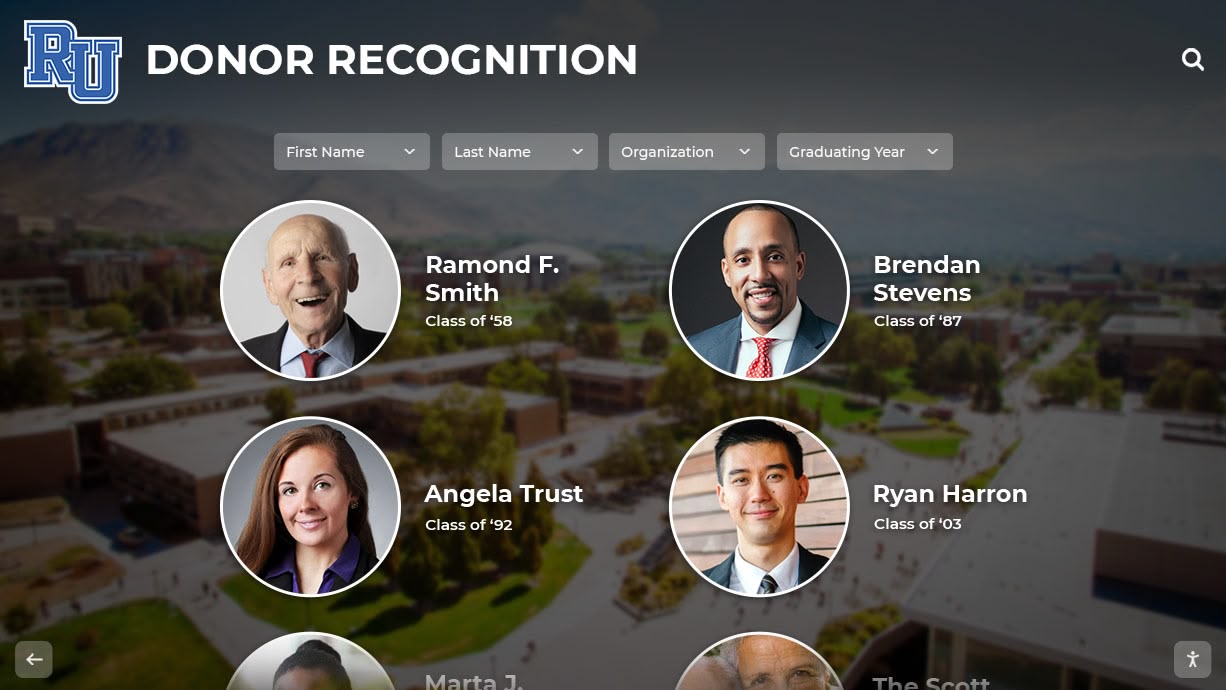
Common Types of School Publications Worth Preserving
Educational institutions produce diverse publication types, each offering distinct historical value:
📚 Yearbooks and Annuals
Comprehensive documentation of each school year featuring student portraits, activities, sports, academics, and memorable moments that serve as primary reference points for alumni reminiscing about their school experiences
📰 Student Newspapers
Regular publications covering campus news, sports, opinion pieces, and student concerns that reveal what issues mattered during specific periods and how student journalists documented contemporary events
📖 Literary Magazines
Collections of student poetry, fiction, essays, and artwork showcasing creative talent and artistic sensibilities across generations, often revealing surprisingly sophisticated work that deserves broader recognition
🎓 Academic Journals
Specialized publications featuring research papers, scientific findings, or scholarly work demonstrating academic rigor and intellectual curiosity that characterized particular eras or programs
Understanding which publications your school produced helps prioritize preservation efforts and identify materials with greatest historical and engagement value.
The Challenge of Preserving Physical Publications
Traditional approaches to maintaining old school magazines face significant obstacles that threaten long-term preservation and accessibility.
Physical Deterioration and Storage Concerns
Paper-based publications inevitably deteriorate regardless of storage conditions:
Environmental Degradation: Even in controlled environments, paper yellows, becomes brittle, and loses structural integrity over decades. Acidic paper commonly used before the 1990s accelerates deterioration. Bindings fail as adhesives dry out. Ink fades, particularly on covers exposed to light. Schools discover that treasured publications from earlier eras have become too fragile to handle without risking permanent damage.
Space Limitations: Complete publication collections spanning decades require substantial storage space. A century of yearbooks might occupy dozens of linear feet of shelving. Schools with limited storage facilities face difficult decisions about what to keep, what to relocate to off-site storage, and what might need to be discarded despite historical value.
Accessibility Barriers: Physical publications stored in archives or administrative offices have limited availability. Students and alumni cannot easily access materials for research, nostalgia, or personal interest without scheduling visits during specific hours. Off-site storage makes access even more cumbersome, effectively removing materials from regular community engagement.
Handling Damage: Each time someone reads a fragile publication, handling causes incremental damage. High-interest volumes like yearbooks from reunion years experience accelerated wear from repeated viewing. The paradox of preservation is that making materials accessible accelerates their deterioration.
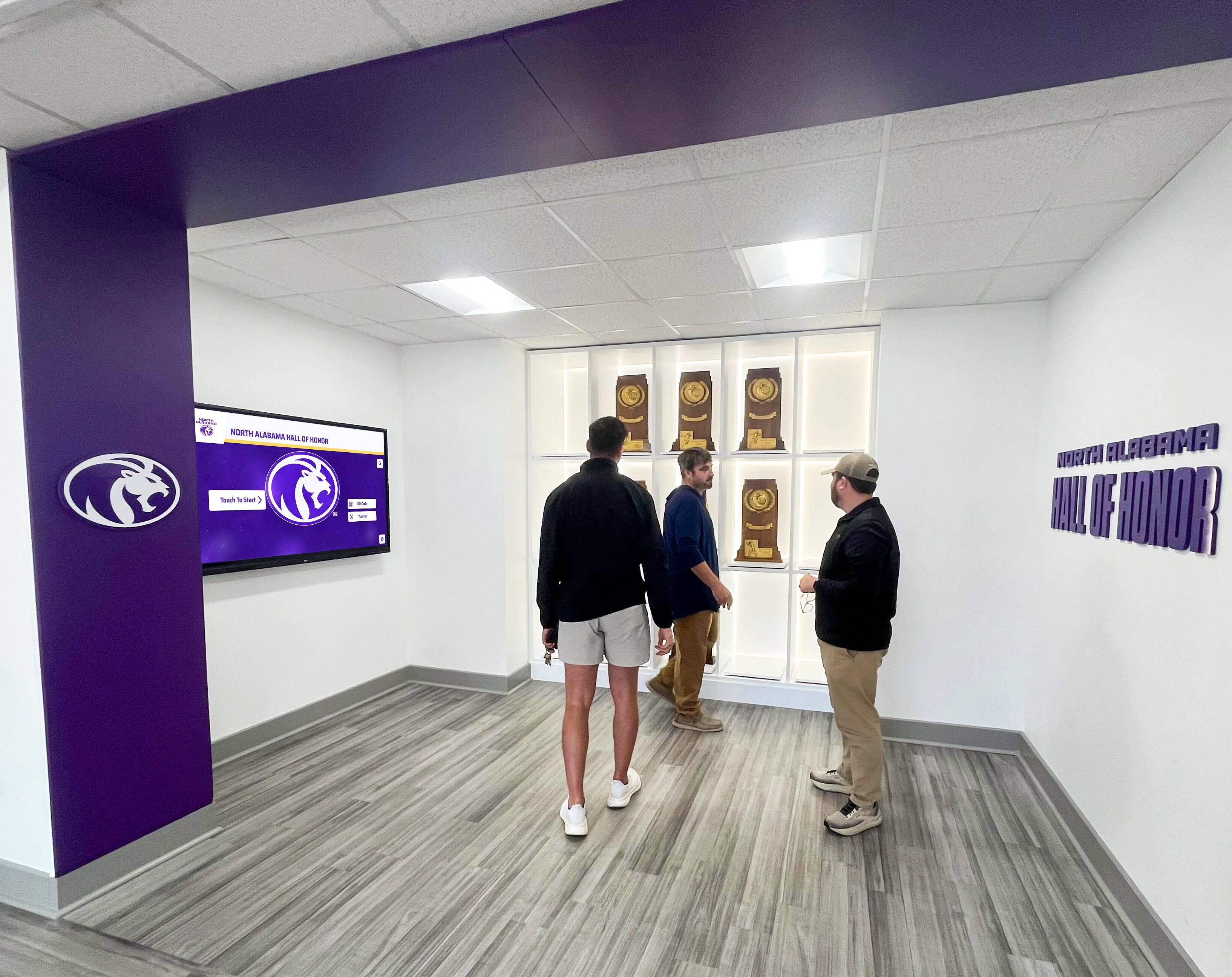
Limited Engagement with Inaccessible Archives
When historical publications remain hidden in storage, their value diminishes:
Missed Alumni Engagement Opportunities: Graduates who might eagerly explore old yearbooks or read publications from their school years never do so because access requires too much effort. Development offices lose powerful cultivation tools when nostalgic content remains unavailable. Reunion planning becomes more difficult without easy access to class yearbooks and contemporary publications.
Educational Potential Unrealized: Teachers cannot easily incorporate historical publications into curriculum when accessing archives requires special permissions and logistics. Students miss opportunities to learn from historical examples of student journalism, creative writing, or artistic expression that might inspire their own work.
Institutional History Forgotten: When publications stay hidden, the rich stories they contain fade from institutional memory. Current students and new community members never discover fascinating historical details, notable alumni, or important traditions documented in old publications. Institutional identity weakens when historical continuity remains invisible.
Digital Preservation: Modern Solutions for Historical Materials
Digital preservation solves the core challenges of maintaining old school magazines while creating new possibilities for engagement and accessibility.
Benefits of Digitizing School Publications
Converting physical publications to digital formats delivers multiple advantages:
Permanent Preservation: Digital files do not deteriorate. Once scanned at high resolution, content remains perfectly preserved indefinitely. Multiple backup copies stored in different locations provide disaster protection impossible with unique physical artifacts. Digital preservation ensures future generations inherit perfect copies rather than deteriorating originals requiring increasingly delicate handling.
Unlimited Accessibility: Digital publications can be accessed simultaneously by unlimited users from anywhere in the world. Alumni in distant cities can browse their old yearbooks during lunch breaks. Researchers can examine historical materials without traveling to campus. Current students can explore decades of school history during class projects. Accessibility transforms archives from rarely-used storage into actively-engaged resources.
Powerful Searchability: Digital text recognition enables searching entire publication collections for specific names, topics, or keywords. Finding every appearance of a particular student across multiple yearbooks takes seconds rather than hours of manual page-turning. Researchers locating references to specific events or topics can instantly identify relevant materials across decades of publications.
Enhanced Preservation of Originals: Once publications are digitized, originals can remain in secure, climate-controlled storage with minimal handling. The digital copies serve regular access needs while physical artifacts receive preservation-focused care. This separation of access from preservation extends the life of irreplaceable originals dramatically.
Cost-Effective at Scale: Initial digitization requires investment, but long-term costs decrease significantly. No ongoing expenses for climate control of accessible copies, no replacement costs as digital files don’t wear out, and no space expenses for storing accessible materials. The economic case for digitization strengthens as collections grow.
Schools exploring digital preservation strategies discover that the benefits extend well beyond simple format conversion to fundamentally transform how communities engage with institutional history.
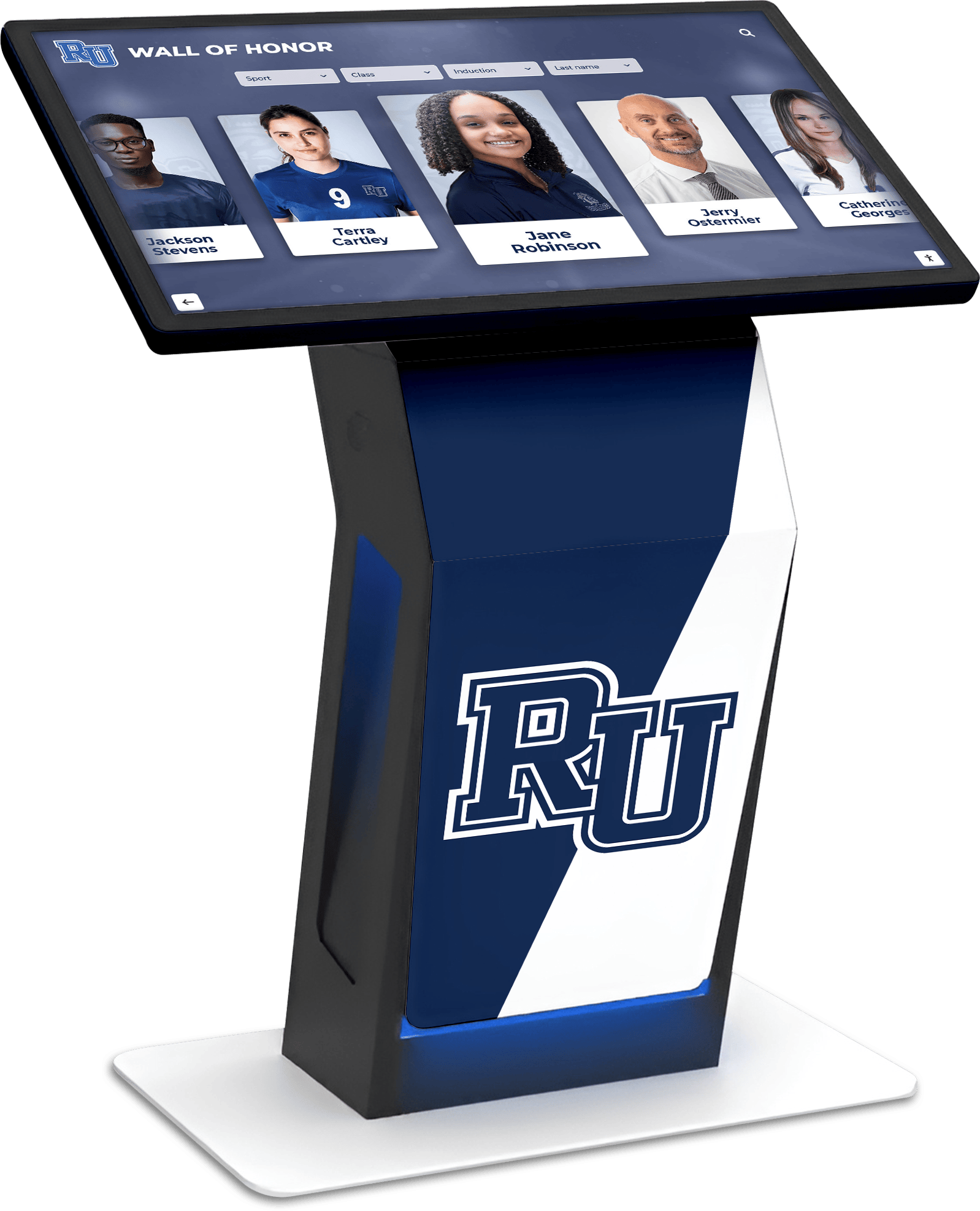
Digital Display Technologies for School Archives
Multiple technology platforms enable effective presentation of digitized school publications:
Interactive Touchscreen Kiosks: Physical displays installed in high-traffic campus locations create engaging experiences where students, visitors, and alumni organically encounter historical publications. Touchscreens enable intuitive browsing, zooming into specific pages or photos, searching for names or keywords, and exploring chronologically through decades of materials. Strategic placement in main lobbies, alumni centers, or libraries ensures maximum visibility and usage.
Solutions like touchscreen displays for schools provide user-friendly interfaces specifically designed for browsing historical content without requiring technical expertise from viewers.
Online Digital Archives: Web-based platforms extend access beyond physical campus to global alumni communities. Responsive design ensures yearbooks and publications display properly on desktops, tablets, and smartphones. Authentication systems can balance public accessibility with privacy protections when appropriate. Integration with existing alumni websites creates seamless experiences connecting historical content with contemporary community platforms.
Mobile Applications: Dedicated apps optimize smartphone access to digital publication archives. Push notifications can alert users when new materials are digitized or when milestone anniversaries create relevant engagement opportunities. Offline access allows downloading specific yearbooks or publications for viewing without internet connectivity. Social sharing features enable alumni to share favorite pages or memories with classmates through text or social media.
Hybrid Physical-Digital Integration: Some schools maintain physical publication displays enhanced with digital access points. QR codes next to vintage yearbooks link to full digital versions for detailed exploration. Physical artifacts create tangible connections while digital access enables comprehensive viewing. This hybrid approach satisfies those who value physical materials while providing practical accessibility through digital formats.
Implementing Digital Preservation Projects
Successful digitization initiatives require systematic planning, appropriate resources, and sustainable workflows.
Planning and Assessment Phase
Thorough preparation ensures efficient digitization that meets institutional needs:
Inventory and Prioritization: Begin by cataloging all existing publications identifying which materials exist, noting physical condition and preservation urgency, assessing which publications have greatest historical or engagement value, and identifying gaps where materials are missing. This inventory reveals project scope and helps establish realistic timelines and budgets.
Many schools discover alumni possess personal copies of missing publications. Community outreach campaigns can locate materials that fill collection gaps. Even partial collections provide significant value when digitized.
Condition Assessment: Evaluate whether materials can withstand scanning processes or require conservation treatment first. Publications with failing bindings may need repair before digitization. Extremely fragile materials might require specialized scanning equipment and expertise. Professional conservators can assess condition and recommend appropriate approaches for particularly valuable or delicate materials.
Goal Definition: Clear objectives guide implementation decisions. Goals might include preserving all materials in accessible digital format, creating searchable access for students and alumni, supporting curriculum integration of historical resources, enabling development office use for alumni cultivation, or generating reunion engagement through yearbook access. Specific goals enable progress measurement and justify investment to stakeholders.
Budget Development: Realistic financial planning considers digitization service costs or equipment purchase, metadata creation and organization expenses, platform licensing or development for display and access, storage costs for high-resolution digital files, ongoing maintenance and content addition workflows, and staff time for project management and quality control. Multiple funding sources may support digitization including operating budgets, alumni association grants, reunion class gifts, historical preservation grants, and individual donor sponsorships.
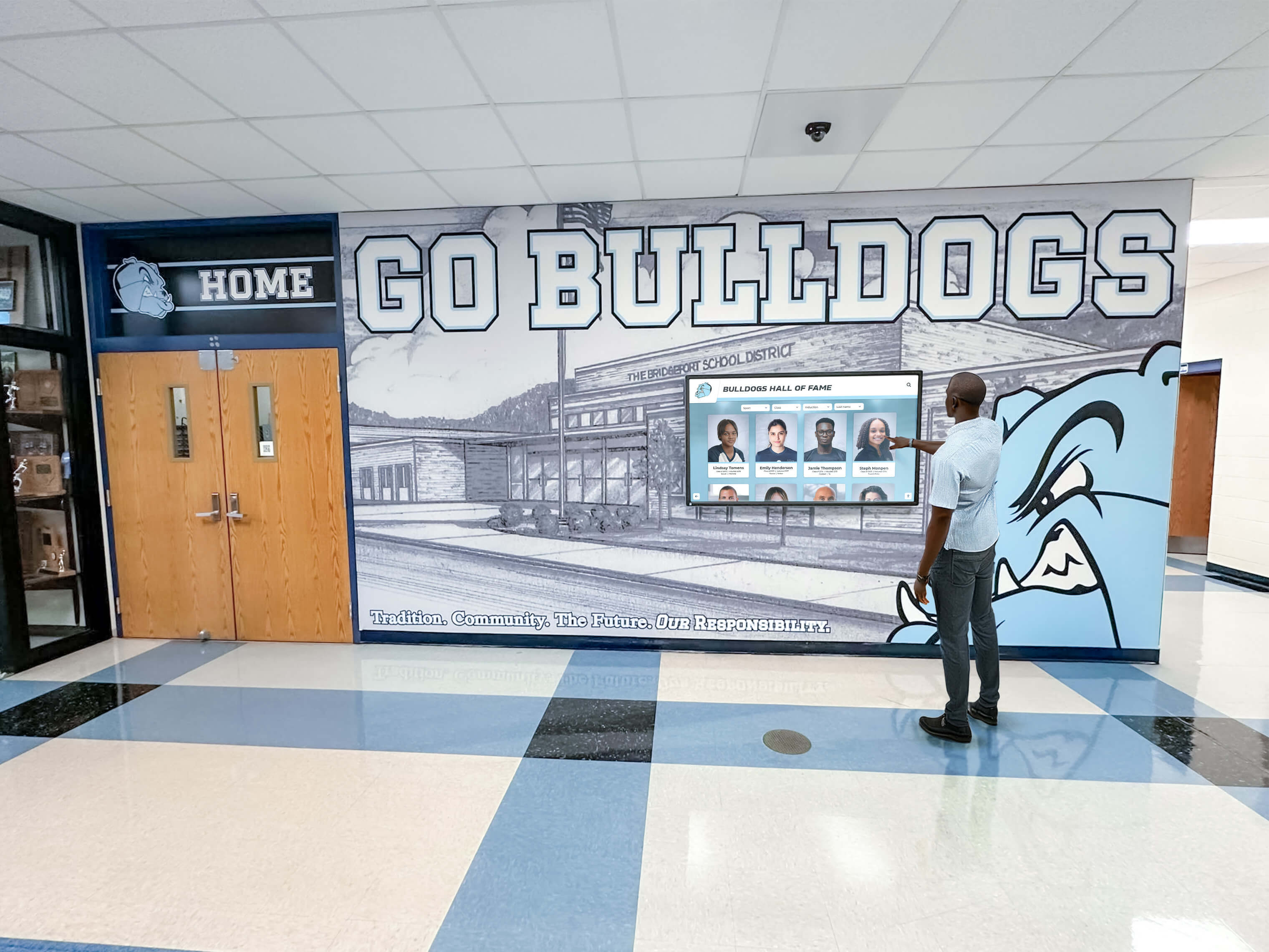
Digitization Methods and Quality Standards
High-quality scanning ensures digital files serve preservation and accessibility needs:
Professional Scanning Services: Specialized vendors focus on book and document digitization, understanding unique challenges of bound materials and varied formats. Professional services provide appropriate equipment for oversized yearbooks or fragile materials, expertise in color correction and image enhancement, faster completion through dedicated resources and industrial equipment, and proper handling protocols protecting fragile originals. Costs typically range from $0.50 to $3.00 per page depending on format, condition, and desired specifications.
In-House Digitization: Schools with appropriate equipment and expertise can digitize internally. Consumer-grade flatbed scanners work for standard publications while specialized book scanners handle bound volumes without damaging spines. In-house approaches offer lower per-page costs after equipment investment, greater control over scheduling and priorities, and ongoing capacity for maintaining collections as new materials are added. However, in-house digitization requires dedicated staff time and appropriate technical skills.
Quality Standards: Preservation-quality digitization requires minimum 300 DPI resolution for text readability, 24-bit color depth for accurate color reproduction, and file formats supporting long-term preservation like TIFF for archival masters with JPEG or PDF derivatives for access. Comprehensive metadata documenting what, when, and source information ensures digital files remain useful as they migrate across future storage systems.
Optical Character Recognition (OCR): Text recognition technology enables searching within digitized publications. OCR processes create searchable text layers allowing users to find specific names, words, or phrases throughout entire collections. Quality varies based on original text quality and OCR software sophistication. Manual review and correction improve accuracy for particularly important materials.
Metadata and Organization Strategies
Thoughtful organization ensures digital archives remain usable and discoverable:
Essential Metadata Fields: Each digitized publication should include descriptive information like publication title and type, publication date or school year, volume and issue numbers when applicable, editor names and staff credits, physical description of original, and keywords describing significant content or themes. This metadata enables search and browsing while preserving contextual information that might otherwise be lost.
Consistent Naming Conventions: Systematic file naming facilitates organization and retrieval. Conventions might follow patterns like [School]_[PublicationType]_[Year]_[Volume]_[Issue].pdf ensuring logical sorting and clear identification. Consistency prevents confusion and enables automated processing when collections grow large.
Collection Organization: Hierarchical structures help users navigate. Organize by publication type (yearbooks, newspapers, magazines), then chronologically within each type. Consistent organization patterns enable intuitive browsing without requiring search functionality. Clear navigation paths help users discover materials through exploration rather than only finding specific items through keyword searches.
Rights and Permissions Documentation: Record information about copyright, reproduction permissions, and privacy considerations. Historical student publications typically fall under institutional ownership but individual contributed content may have complicated rights situations. Documentation of rights clearance protects institutions and clarifies what uses are permissible.
Understanding approaches used in digitizing yearbooks and school archives provides additional implementation guidance and best practices.
Creating Engaging Digital Experiences
Simply digitizing publications provides preservation value, but thoughtful presentation transforms archives into dynamic engagement tools.
Interactive Features That Drive Usage
Modern digital platforms enable capabilities impossible with physical publications:
Intuitive Navigation: Users should be able to browse chronologically through decades of publications, jump directly to specific years or volumes, search across entire collections for keywords or names, and filter by publication type or topic. Clear navigation enables both purposeful searching and casual exploration that might lead to unexpected discoveries.
Zoom and Enhancement: High-resolution scans enable zooming into fine details like individual faces in group photos or small text in dense layouts. Image enhancement can improve legibility of faded text or low-contrast originals. Pan and zoom controls let users examine materials more closely than often possible with fragile physical copies.
Social Sharing: Enable users to share interesting discoveries through email, social media, or direct links. Alumni texting yearbook pages showing themselves to former classmates drives further engagement. Social features amplify reach as users become active promoters of content they find meaningful.
Annotation and Commentary: Some platforms allow users to add comments, identify unidentified individuals, or share memories connected to specific pages. This crowdsourced knowledge enriches archives beyond what institutional staff alone could provide. Alumni contributions help identify people, explain context, or correct errors in original publications.
Comprehensive interactive timeline approaches can integrate digitized publications within broader chronological presentations of school history.
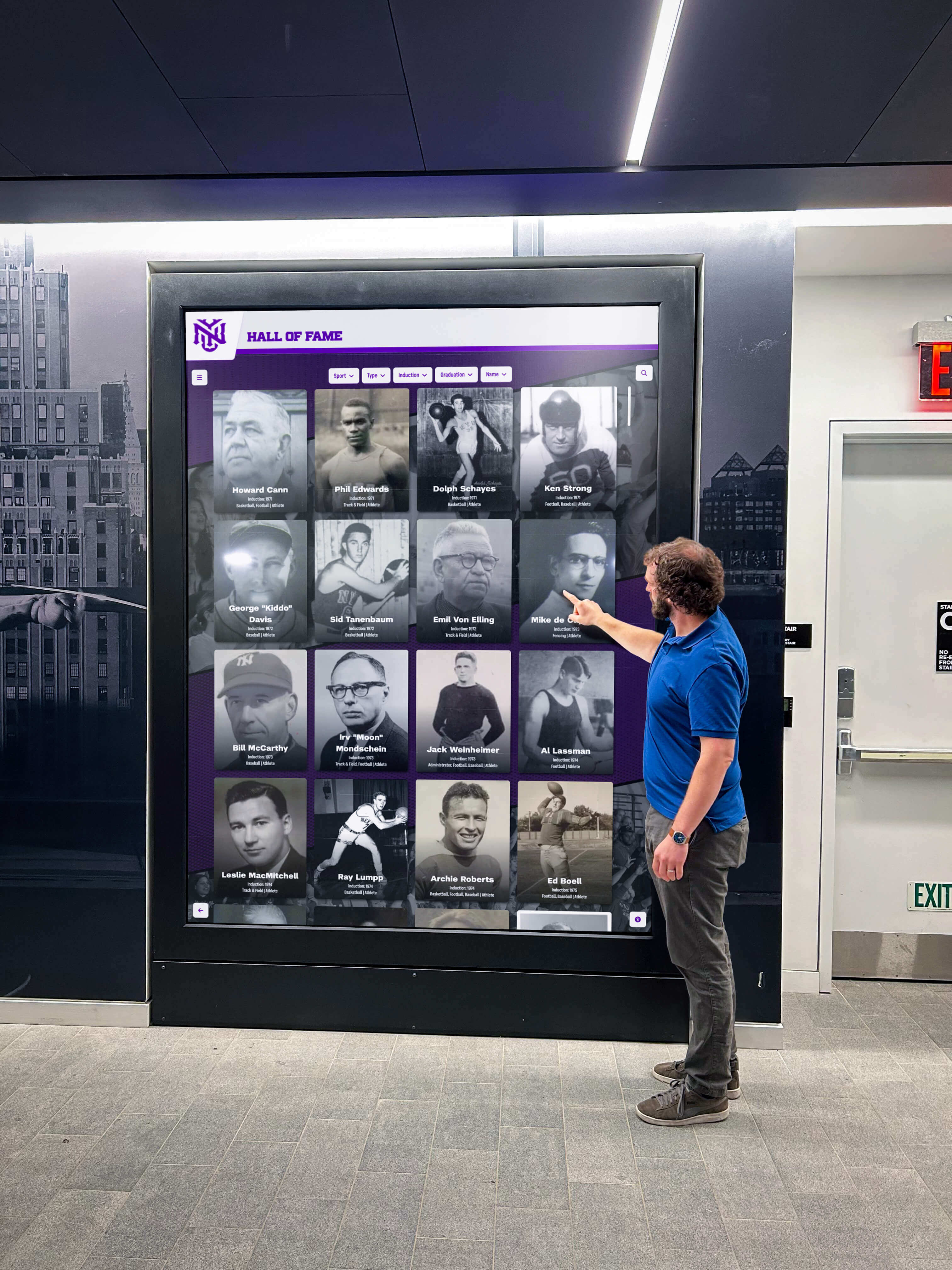
Integration with Recognition Programs
Digital publication archives achieve maximum impact when connected with broader recognition initiatives:
Alumni Profile Links: Connect yearbook appearances to comprehensive alumni profiles showing “where are they now” updates. Current graduates discovering successful alumni who appeared in decades-old yearbooks see clear pathways from student years to accomplished careers. This connection between historical and contemporary content creates compelling narratives.
Achievement Documentation: Link publications documenting student accomplishments to broader recognition displays celebrating those same achievements. An athlete featured in a 1985 yearbook might connect to current displays honoring their school records. Literary magazine publications link to author profiles celebrating continued creative work.
Multi-Generational Stories: Highlight when publications document multiple family generations attending the same school. Parents appearing in 1980s yearbooks whose children appear in 2010s editions create powerful multi-generational narratives. These family connections resonate emotionally while demonstrating sustained institutional relationships across generations.
Historical Context Integration: Enrich publication archives with additional context about events, eras, or cultural moments visible in materials. Brief explanations help contemporary viewers understand references that would have been obvious to original audiences but might be obscure decades later. Historical framing increases educational value while making materials more accessible to users unfamiliar with specific eras.
Promoting and Driving Engagement
Creating excellent digital archives represents only the first step—active promotion generates awareness and usage.
Launch and Awareness Campaigns
Introduce digitized collections strategically to maximize initial engagement:
Formal Launch Events: Announce newly available digital archives through events generating excitement and media attention. Demonstrations showing features and how to access content, presentations featuring interesting historical discoveries from the digitization process, recognition of donors or sponsors who supported the project, and media invitations securing press coverage all build awareness and position digitization as significant institutional achievement.
Alumni Communication: Direct outreach to graduates informs them about newly accessible materials. Email campaigns targeting reunion years with links to their specific yearbooks, social media campaigns sharing interesting historical photos and pages, alumni magazine features explaining the project and how to access materials, and reunion promotion encouraging returning alumni to explore their yearbooks create multiple touchpoints driving initial usage.
Campus Integration: Promote archives to current students and faculty. Classroom demonstrations showing historical materials relevant to curriculum, library displays featuring selected digitized content, student orientation introductions to school history resources, and faculty workshops explaining how to incorporate materials into teaching all drive on-campus awareness and usage.
Media Relations: Press releases to local and educational media emphasizing innovation and historical preservation often generate coverage. Human interest stories about notable discoveries during digitization, milestone achievements like completing century-long yearbook digitization, or technology innovation angles highlighting cutting-edge preservation approaches all provide media hooks.
Strategies used in school history recognition programs provide additional promotional approaches applicable to publication archives.
Sustained Engagement Strategies
Initial launch momentum must translate into ongoing usage:
Content Highlighting Campaigns: Regular social media posts featuring interesting pages or discoveries from historical publications maintain visibility. “Throwback Thursday” weekly features, “This Day in History” posts connecting current dates to historical publication content, mystery photo contests challenging community members to identify people or provide context, and alumni spotlights connecting contemporary achievements to historical yearbook appearances all create recurring content streams.
Event Integration: Feature digital archives prominently during campus events. Homecoming displays in central locations during celebrations, alumni reunion exploration stations encouraging classmates to browse together, development event demonstrations showing publications from donors’ school years, and graduation ceremonies featuring historical yearbook projections create natural engagement opportunities tied to existing activities.
Educational Usage: Promote curriculum integration through faculty outreach. History teachers using publications as primary source materials, journalism students analyzing historical student newspaper coverage, creative writing classes examining literary magazine evolution, and research projects using digital archives for institutional history studies all create sustained academic usage while demonstrating educational value.
Continuous Content Expansion: Maintain momentum by regularly adding newly digitized materials. Announcements when new volumes become available remind users to check archives periodically. Gaps identified in initial collections can be filled through alumni contributions. Annual additions of current yearbooks and publications demonstrate living archives that continue growing rather than static historical repositories.
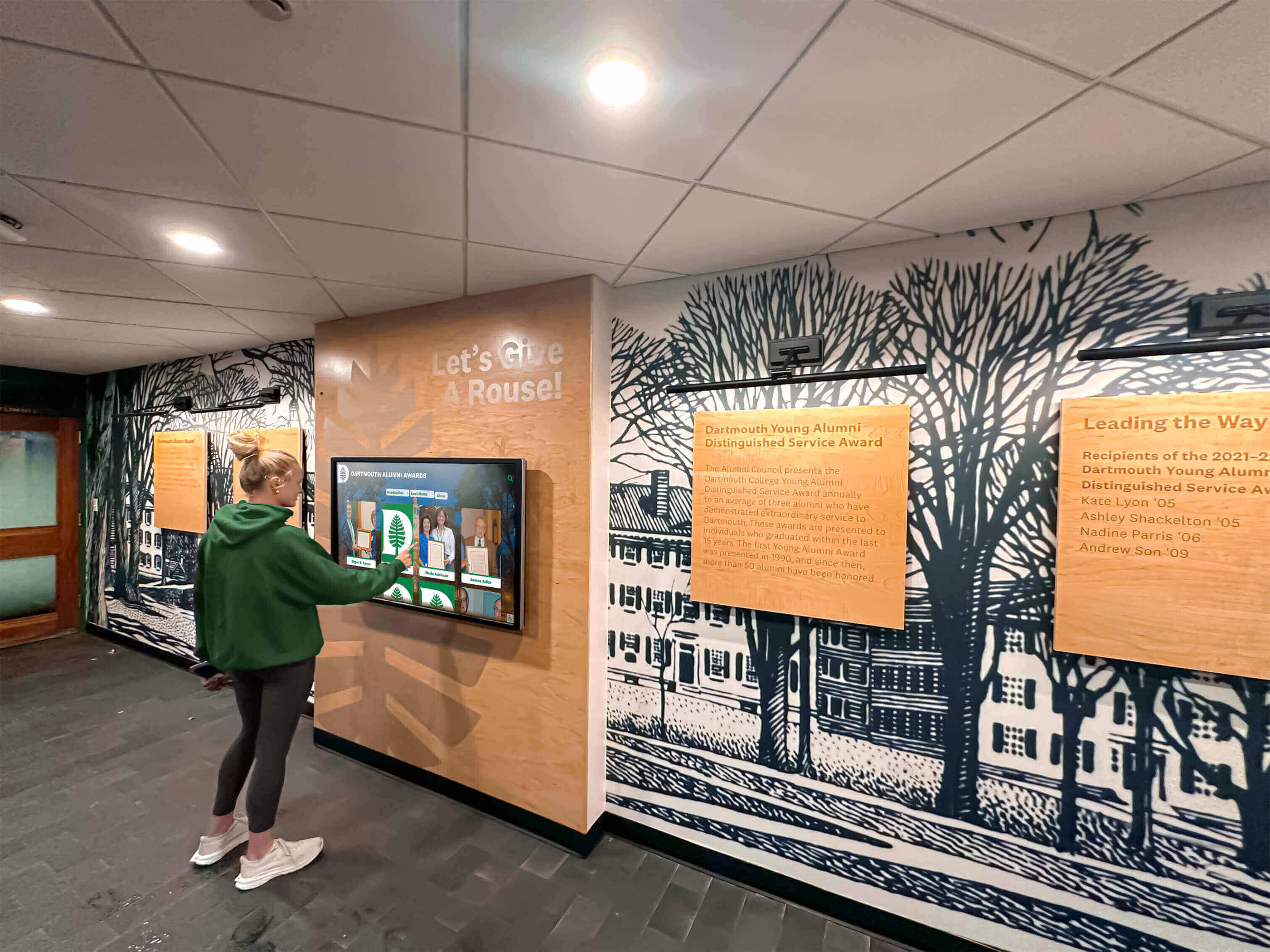
Addressing Common Challenges
Digital preservation projects face predictable obstacles that careful planning can mitigate.
Privacy and Permission Considerations
Historical publications containing student information require thoughtful privacy policies:
Student Photo and Information: Educational institutions typically hold rights to use student directory information and photos taken in official capacity for institutional purposes. However, digital distribution raises considerations. Establish clear policies about whether archives will be publicly accessible or require authentication, how to handle requests from individuals who prefer their information removed, what information beyond photos and names is appropriate to include in searchable metadata, and processes for responding to privacy concerns as they arise.
Historical Context: Publications created decades ago predated modern privacy expectations and digital distribution capabilities. Obtaining retroactive permission from thousands of former students proves practically impossible. Balanced approaches make historical materials accessible while establishing clear removal processes for individuals who object upon discovering their inclusion.
Sensitive Content: Some historical publications may contain content considered offensive or inappropriate by contemporary standards. Rather than censoring historical documents, provide contextual framing acknowledging that past publications reflect attitudes of their times. Brief statements can acknowledge that some content may not align with current institutional values while maintaining fidelity to historical record.
Copyright Considerations: Schools typically own rights to publications they produced. However, individual creative works like poems, stories, or artwork may have separate copyright protections. Institutional use for educational purposes generally falls under appropriate fair use, but establishing clear copyright policies protects schools and clarifies permissible uses.
Budget Constraints and Funding
Resource-limited schools can still implement meaningful digitization through phased approaches:
Prioritized Implementation: Rather than attempting comprehensive collection digitization immediately, focus on high-impact materials delivering value while building toward complete coverage. Begin with recent publications most relevant to active alumni, focus on reunion years for upcoming class anniversaries, add historical materials incrementally as budget permits, and expand metadata richness over time as resources allow.
Creative Funding Sources: Beyond operating budgets, explore alternative funding including alumni association grants specifically for historical preservation, reunion class gifts with graduating classes sponsoring digitization of their yearbooks, individual donor sponsorship of specific volumes or features, grants from historical preservation foundations, and partnerships with local libraries or historical societies who might share digitization costs for materials of mutual interest.
Volunteer Engagement: Alumni and community volunteers can contribute to digitization efforts. Retired educators or librarians might volunteer time for metadata creation, alumni with technical skills could assist with scanning or digital processing, students might participate through internships or service learning projects, and crowdsourcing approaches can engage community in identifying individuals or providing contextual information.
Phased Technology Investment: Start with basic digital access before investing in expensive touchscreen installations. Web-only archives validate community interest and demonstrate value before committing to physical display hardware. Initial simpler platforms can be enhanced over time as budgets grow and usage patterns clarify what features matter most to users.
Understanding digital display implementation strategies helps schools select appropriate technology investments matching available resources.
Measuring Success and Impact
Successful preservation projects demonstrate measurable value justifying continued investment and expansion.
Quantifiable Metrics
Digital platforms enable tracking specific usage that validates impact:
Access and Engagement Statistics: Monitor unique users accessing digital archives, total page views and session duration, most frequently viewed publications or time periods, search query patterns revealing what users seek, and return visitor rates showing sustained interest. These metrics demonstrate actual usage beyond simply creating archived materials.
Alumni Relations Outcomes: Track increased alumni website traffic after archive launches, growth in alumni database contacts as graduates update information, reunion attendance improvements when yearbooks are promoted, alumni event participation increases, and qualitative feedback about archive appreciation from graduates.
Educational Usage: Document classroom assignments incorporating digital archives, research projects utilizing publications as sources, and faculty adoption rates for curriculum integration showing academic value. Student project outputs demonstrating learning enabled by archive access validate educational benefits.
Development Results: Measure cultivation success rates leveraging archive content in donor conversations, giving participation among classes whose yearbooks are highlighted, campaign effectiveness using nostalgic archive content, and donor feedback connecting gifts to emotional responses triggered by historical materials.
Approaches used in measuring digital recognition ROI apply similarly to publication archive initiatives.
Qualitative Impact
Beyond quantifiable metrics, digital archives deliver profound qualitative benefits:
Strengthened Community Identity: Alumni reconnecting through old publications deepen emotional bonds with institutions. Nostalgia generates connections translating into engagement and support. Current students exploring institutional history build pride seeing themselves as part of continuing traditions.
Preserved Institutional Memory: Digital preservation ensures future generations inherit comprehensive historical records rather than deteriorating fragments. Institutional culture and values persist through documented history. The permanence of digital preservation means today’s preservation efforts benefit not just current community but countless future generations.
Enhanced Reputation: Visible investment in history and preservation signals that institutions value their people and traditions. Modern, professional digital systems create positive impressions during campus visits. Media coverage of innovative preservation generates positive publicity demonstrating forward-thinking approaches to honoring tradition.
The Future of School Publication Archives
Technology continues evolving, creating new possibilities for engaging with historical publications.
Emerging Capabilities
Artificial Intelligence Enhancement: AI technologies enable automated identification of individuals in photos across multiple publications, intelligent content categorization and theme detection, automated metadata generation reducing manual work, and quality enhancement improving legibility of degraded materials. As these capabilities mature, they’ll accelerate digitization while enriching archives with insights difficult to generate manually.
Augmented Reality Integration: Future platforms might overlay digital content onto physical spaces. Pointing smartphones at hallway locations could reveal historical photos from that space. Virtual tours could integrate historical publication content showing how campus evolved. AR creates immersive connections between present and past more visceral than traditional display formats.
Social and Collaborative Features: Enhanced community participation transforms archives from static repositories into living documents. Alumni annotations sharing memories and identifying individuals, collaborative identification projects enlisting community help with unidentified photos, virtual reunion capabilities connecting classmates through shared archive exploration, and crowdsourced biographical updates where graduates contribute life stories enrich materials beyond what institutions alone could create.
Voice and Accessibility Enhancements: Audio descriptions make archives accessible to visually impaired users. Voice search enables finding content through spoken queries. Multi-language support serves diverse communities. These inclusive features expand who can meaningfully engage with historical materials.
Conclusion: Transforming Archives Into Engagement Tools
Old school magazines and publications represent precious institutional treasures documenting authentic student voices, creative expression, and community life across generations. Digital preservation permanently protects these irreplaceable materials from continued deterioration while fundamentally transforming accessibility, engagement, and community value.
Schools implementing thoughtful digitization discover that historical publications become powerful tools for alumni cultivation, strengthening institutional identity, educational enrichment, fundraising support, and community engagement far beyond what physical archives hidden in storage could ever achieve.
Whether your school begins with a pilot project digitizing recent yearbooks or undertakes comprehensive historical preservation spanning a century of publications, every step toward digital accessibility delivers value. Modern technologies exist today to transform aging paper archives into dynamic, searchable, shareable resources that honor institutional traditions while meeting contemporary community expectations for access and engagement.
The investment in digital publication preservation pays ongoing dividends through permanent protection of irreplaceable materials, unlimited access enabling global community engagement, searchable capabilities transforming how users discover content, integration opportunities connecting historical and contemporary recognition, and sustained relevance as digital archives continue growing with each new publication year.
For schools ready to preserve their publication heritage while creating engaging digital experiences, explore how solutions like Rocket Alumni Solutions can help transform aging archives into vibrant community resources that celebrate institutional history, strengthen alumni connections, and inspire current students through the voices and creativity of all who came before them.
